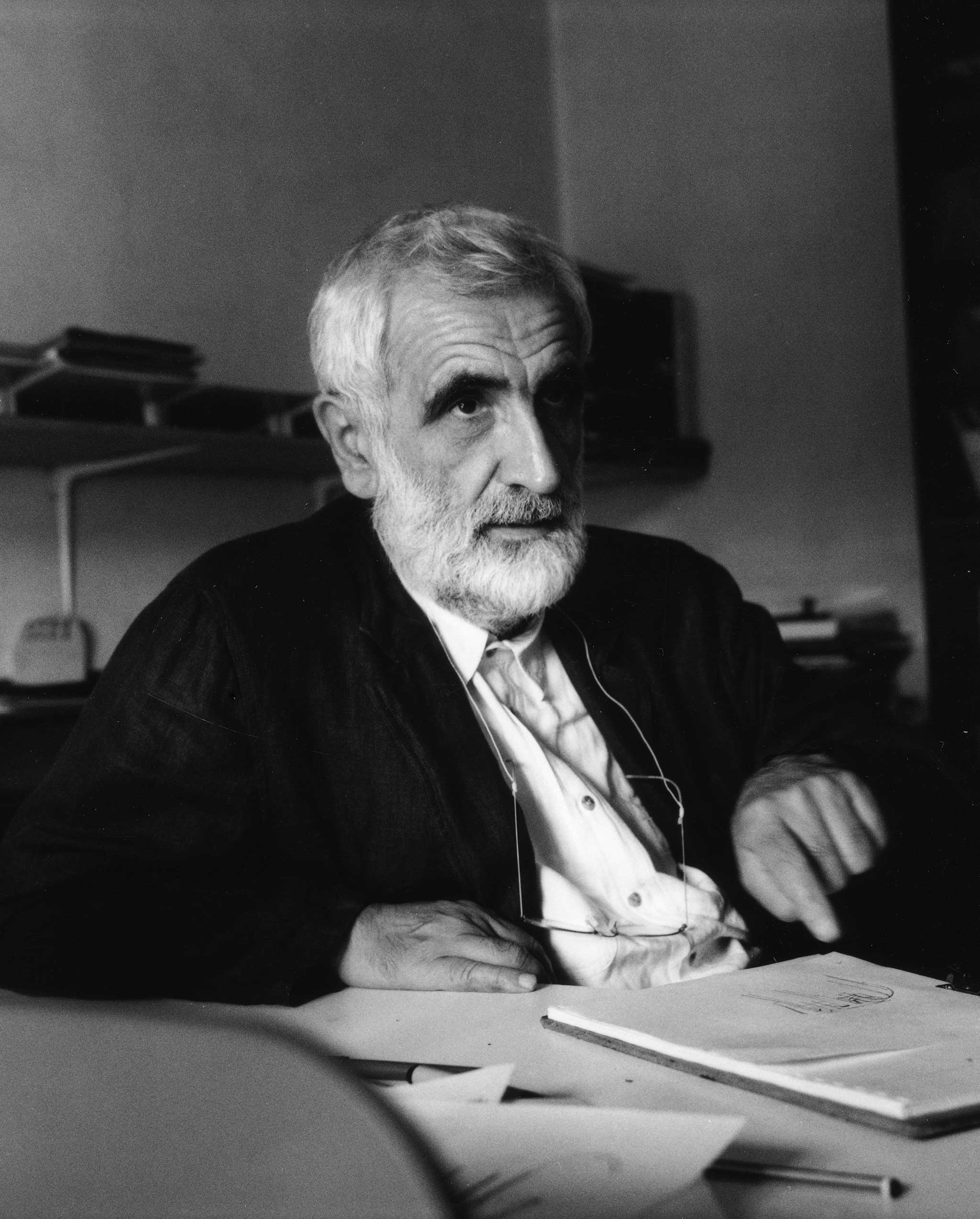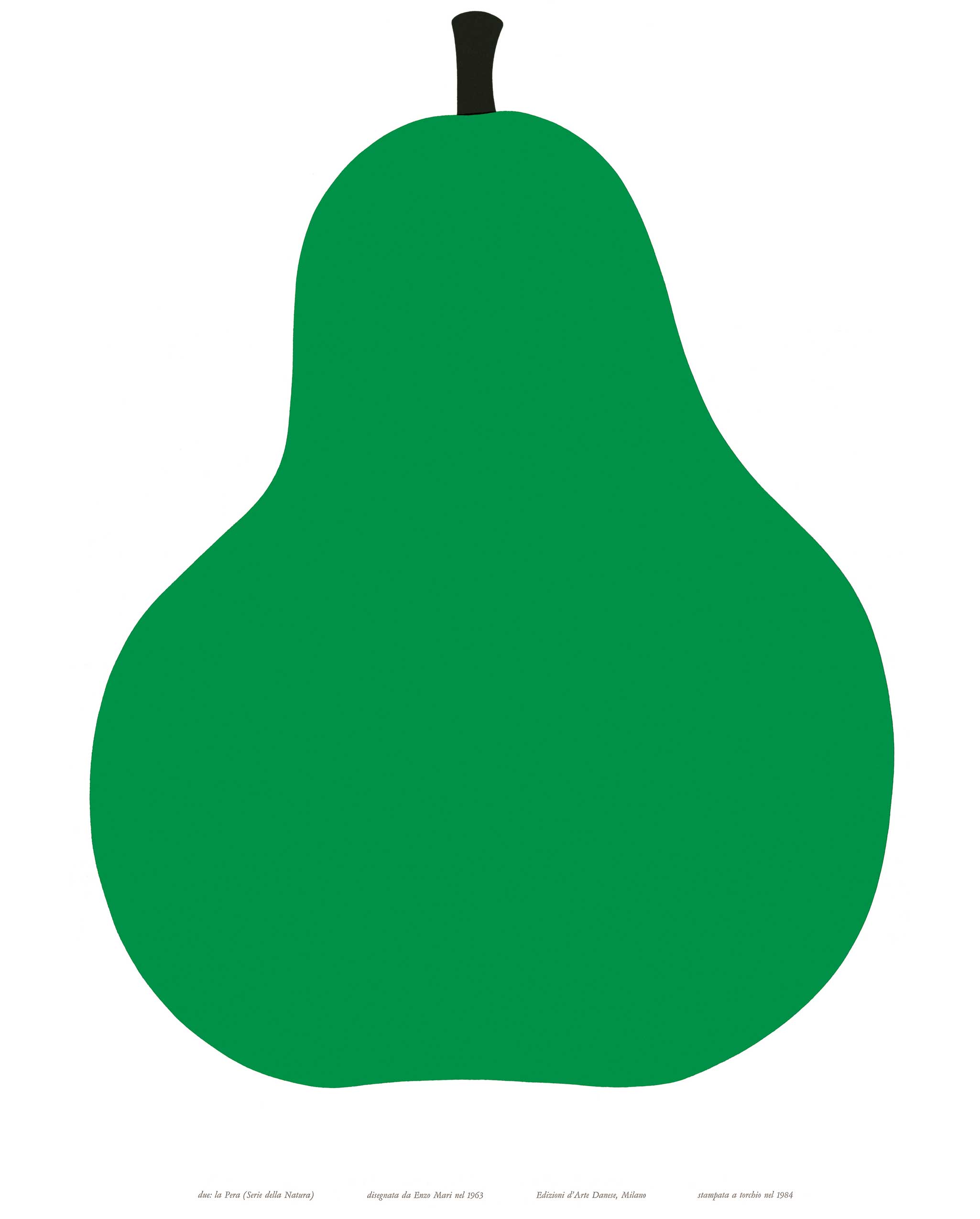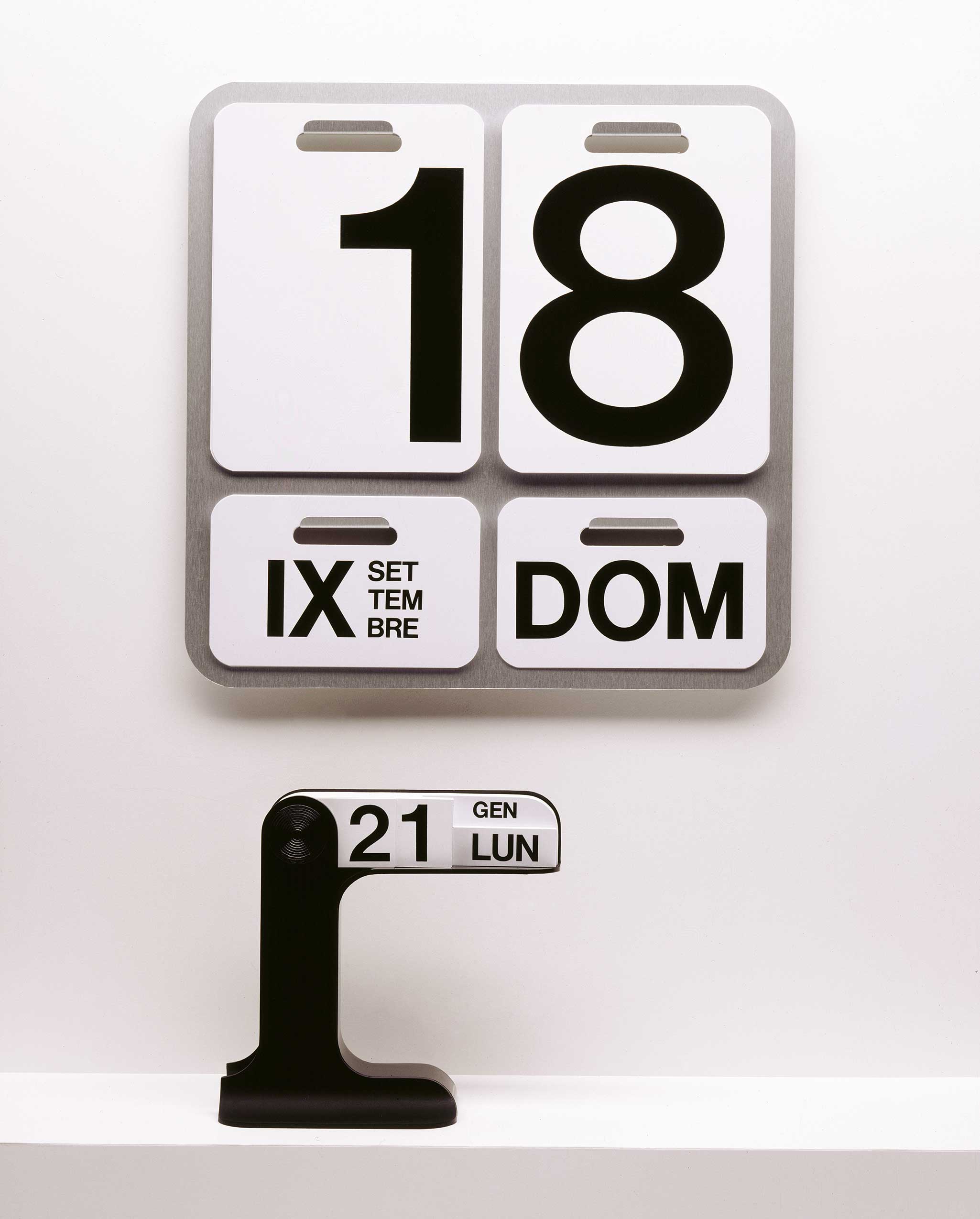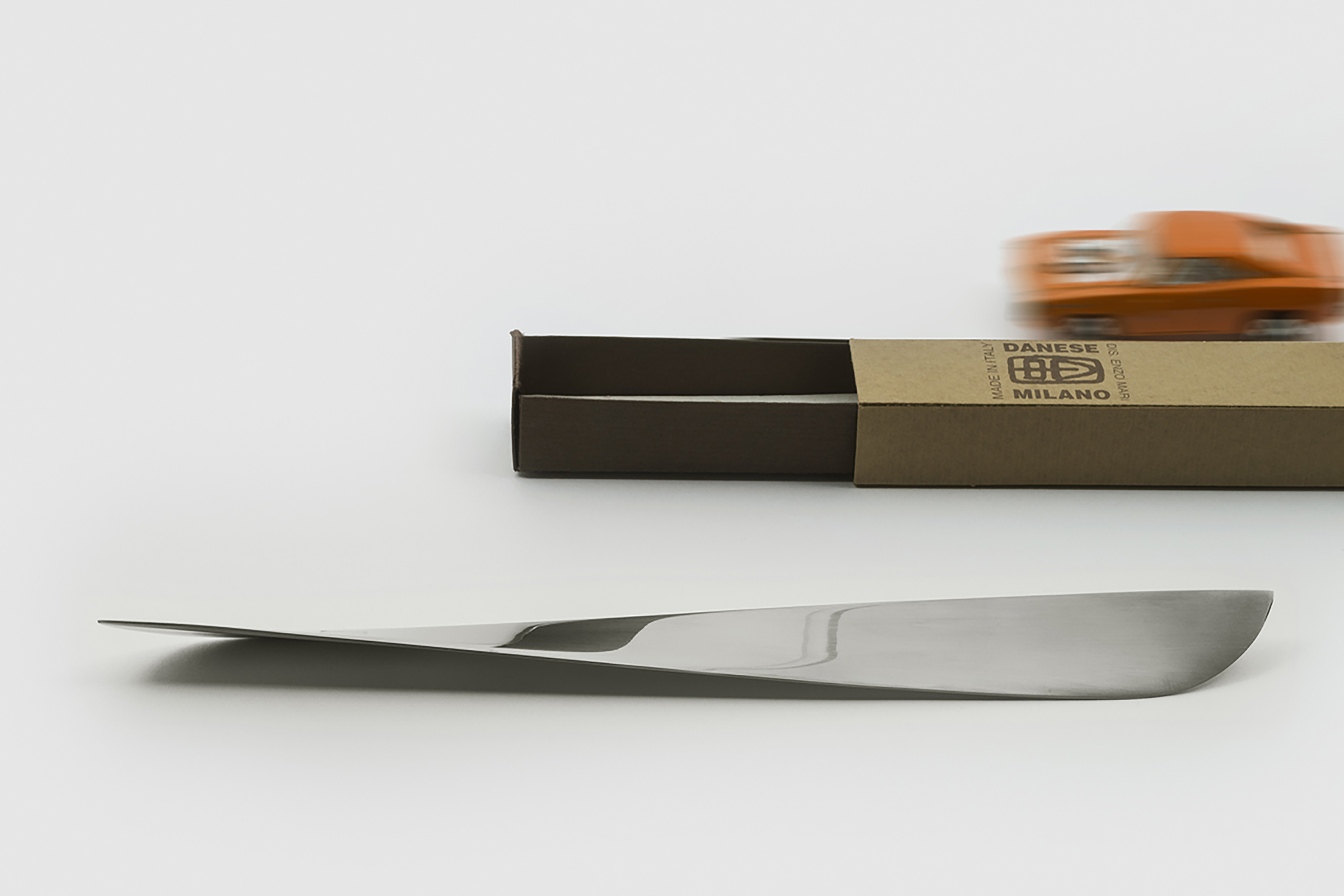 © Ramak Fazel
© Ramak Fazel
 The Nature Series, No. 2: the pear – Enzo Mari with Elio Mari
The Nature Series, No. 2: the pear – Enzo Mari with Elio Mari
 Perpetual Calendar © Danese Milano
Perpetual Calendar © Danese Milano
2. The Perpetual Calendar, 1959–1967
Much of Enzo Mari’s work was manufactured and distributed by Danese Milano, one of the foremost names in post-war Italian design.
One of Mari’s earliest projects for the brand was a perpetual calendar developed in 1959, featuring four horizontal strips of wood, that the user manually slides to reflect the date.
Later iterations were produced in anodized aluminium and PVC using the Helvetica font. These calendars represent Mari’s enduring belief in non-disposable, enduring design, and are still in production today.
3. Self-assembly chair, 1974
Mari developed the Autoprogettazione project, a free manual for creating modernist furniture from cheap, off the shelf materials, as part of a desire to return the means of furniture production back to the people.
Truly democratic in its principles, the manual’s accompanying text even politely requested that users send photographs of their creations to Mari’s studio.
Build your own Sedia P chair at a workshop at the Design Museum
 16 animali © Federico Villa, Danese Milano
16 animali © Federico Villa, Danese Milano
4. 16 Animali for Danese Milano, 1957
Cut in one stroke from a single piece of oak, the piece can be separated into 16 separate animal figures including a snake, camel and a rhino.
The idea for the set came from Mari’s belief in the importance of access to design for everyone, from the youngest age, combined with his frustration at needing to create new stories for his own children – why not give them the tools to create ‘a potentially infinite story’?
In 1976 he created another puzzle-like piece, this time from marble – the 44 separate pieces came together to form a giant hammer and sickle, which was presented at the Italian pavilion at the Venice Art Biennale.
5. Ameland Letter Opener, 1962
Forced to leave high school before completing his diploma due to his father’s ill health, Mari was employed in a number of manual jobs, including the delivery of vegetables and bricklaying.
These experiences shaped his politics, but also his design language – every project began with a desire to understand how people behaved and what elements of design were truly essential to the creation of any item.
Much of his expansive career was spent creating everyday items and simple pieces that were both beautiful and highly functional.
 © Danese Milano
© Danese Milano